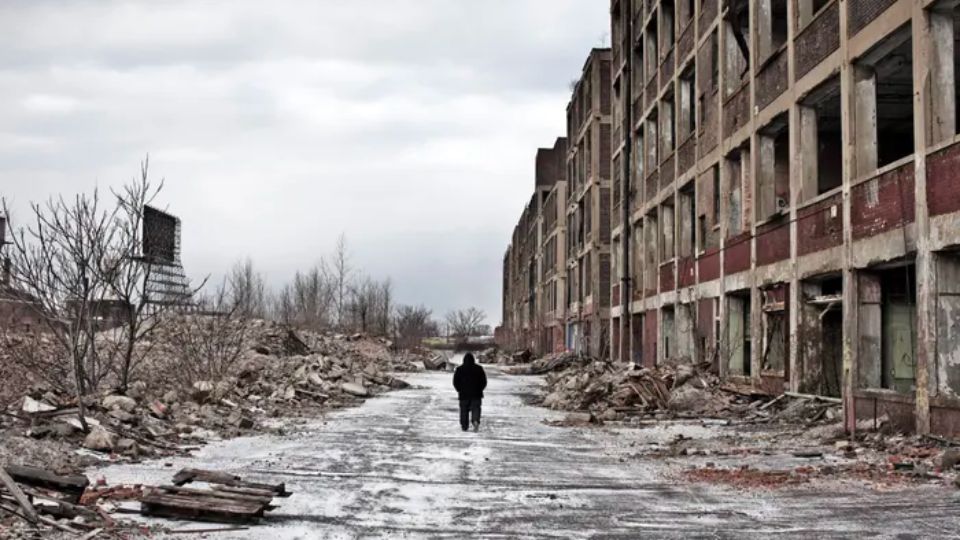“Tell me, is this the city you thought you would find?” Since I moved to Detroit, six different people have asked me this question in different ways. I’m talking to Sergio Maclean right now. There is a lot of art in the Shinola Hotel bar where we are talking. He has been running things here with his partner Audrey since January, when the first hotel for the high-end brand Shinola opened to a lot of excitement in the middle of Downtown.
The house is luxurious and warm. Tall windows let in a lot of light, which shines on custom furniture and mirrors. There are Art Deco details that remind you of the city’s glory days, and there is a turntable and a collection of Motown records in every room as a proud nod to its musical history.
Outside, a wide boulevard cuts a canyon through some very nice buildings from the Roaring Twenties. The traditional center of the city has a lot of new shops, hotels, and bars for the first time in a generation. The streets are busy and safe until the wee hours of the morning. What I really meant was something a little more bleak, Sergio.
He doesn’t hold it against me, thank goodness. “For years, the news only wanted to report bad things about Detroit, like crime or a loss of residents.” All of it was “ruin porn,” which were pictures of beautiful old buildings like Michigan Central Station that were empty. It was too simple. With its old soul, it’s a city of many kinds. “And the Renaissance is real,” he says. “You’re coming here at a wonderful time.”
If Detroit has turned a new page, the first bad page was turned when the city filed for bankruptcy in July 2013. It was the last shame for a city that had been the most successful and forward-thinking in America in the first half of the 20th century. But hitting rock bottom sparked a new wave of artists, business owners, and investors who started to rethink Detroit and turn around the ship that was sinking.
Even though the city has a lot of history, great sites (like the Detroit Institute of Art, The Henry Ford, and the Motown Museum), I do what Sergio told me to do and spend my city break tuning into the beat, grit, and giddiness of the present.
Also Read: West Virginia Offers Digital Options for Vehicle Registration and Driver’s License
The area around Eastern Market is packed with people on a Saturday. The historic “sheds” in the middle of the 19th-century packing district are home to more than 200 stands selling plants and food grown by small farmers in the area or on joint urban farms. Ribs are sizzling on the grill outside of Bert’s, a place for old-time music and lunch that is always full. Young and old people in Detroit are happy as they drink craft beers and wait in line to buy local honey in the sun.

Everything about the market is old news. It has been a part of city life since 1841, making it the oldest of its kind in the country. But the creative, large-scale paintings that are painted on the warehouses and water towers in the area are much more recent.
“I like street art, but there was too much graffiti in the city.” The person who fixed up Eastern Market, Dan Armand, tells me, “For a while it looked smashed up; it didn’t feel safe.” They started Murals in the Market in 2015, and it is now held every September. The walls of his sad neighborhood were painted by famous artists from around the world, like Richard Wilson, and from his own country, like Pat Perry and Ouizi.
His simple answer when I ask what drove him is, “The people who stayed in Detroit, we’re passionate about this city.” He talks about how people formed “lawnmower brigades” to clean up abandoned parks and empty lots when the city was at its worst. “Some people in Detroit really have a can-do attitude.”
Today, there are about 125 murals that make the area look beautiful. They’re also bringing much-needed foot traffic to backstreets, even on days when there isn’t a market. The area’s young, alternative vibe has been strengthened by the opening of new places like Gather and Eastern Market Brewing Co. Tourists who want to learn more about the social messages and stories behind the art can sign up for a bike tour with RiDetroit.



Leave a Reply